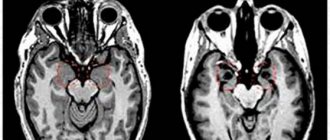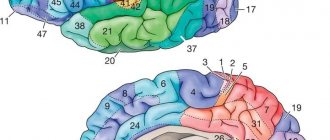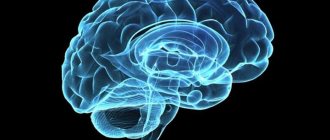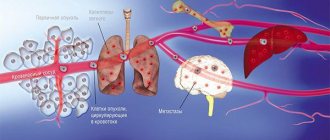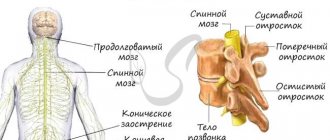The brain often plays a very cruel joke on us. Two people experienced the same event, but their stories differ. What is this - amnesia or a simple lie? However, everything is not as simple as it seems. Memories tend to become distorted. For example, replacing some events with others. In science, this problem is called confabulation, or paramnesia, when a person, in addition to basic memories, has false ones. As a result, it is very difficult to distinguish truth from fiction. Let's figure out what's going on here in this post.
How memories are formed
Our memory is the response of a certain group of neurons to some stimuli. They are formed due to constant changes and connections between themselves. Thus, from birth, our brain never stops working. Neurons wander from image to image and create certain thoughts.
The response is synaptic plasticity, which is permanent changes in the strength of connections (synapses) between brain cells. They may be stronger or weaker depending on how long ago they were activated. Active connections can strengthen, and unused connections, on the contrary, weaken and disappear.
Memory is divided into two categories:
- Short-term. Allows you to hold a thought for about a minute. This is necessary in order to remember a phone number, car number or a person’s last name.
- Long-term. Responsible for long lasting memories.
Long-term memory, in turn, is divided into procedural memory, which is responsible for actions, and declarative memory, which is responsible for consciously recalling information.
All memories are based on declarative memory. It can be activated visually or verbally. For example, you need to remember the names of the football team or restore your shopping list.
Declarative memory is divided into the following categories:
- Semantic. Operates with meanings and concepts. For example, what is a computer or a ball.
- Episodic. Refers to events. For example, when did you have your wedding or how long ago did you go on a catamaran?
Our memory is the reactivation of a specific group of neurons, formed by constant changes in the strength of connections between them. Reactivates a combination of neurons “synaptic plasticity”.
The contact between neurons is called synapses. He may be stronger or weaker. That is, all the connections used can become stronger. However, unused neurons weaken and disappear completely. The connection between two neurons becomes stronger when neuron A sequentially activates neuron B, causing it to fire an action potential. Neurons communicate with each other using electrical events called action potentials and chemical events called neurotransmitters. As a result of changes, additions or death of synapses, our memory is formed.
However, recent studies on elderly mice have proven that due to the hippocampus (a part of the brain), neurogenesis increases, that is, new neurons appear and our memory is restored.
Symptoms
Typical confabulation is easily distinguished by the presence in the presentation of constant or episodic stories that are absolutely implausible from the point of view of logic and common sense. Sometimes a continuous stream of fictitious events occurs so rapidly that it leads the narrator to complete disorientation in his own “memories.” At the same time, the person sincerely believes in what he says. This is another key feature of this disorder.
Confabulations are, first of all, dominated by the inability for critical thinking and self-criticism, but not the deliberate desire to mislead anyone.
Damage to areas of the medial prefrontal and orbitofrontal cortex of the brain leads to the fact that patients do not question even the most ridiculous stories. As a result, such people are most susceptible to fraud, simple deception and outside manipulation.
Any deliberate deception associated with the purpose of personal gain, the desire to impress or avoid punishment is never considered confabulation.
Read about another memory disorder related to paramnesia - cryptomnesia and its manifestations - here.
Main causes of false memory
Research into false memory has recently begun. The founders of this trend were, oddly enough, hypnotists Pierre Janet, Richard Kraift-Ebing and others. Moreover, the latter demonstrated such a phenomenon as age regression. He immersed a person in hypnosis, and he reproduced his childhood.
Scientists immediately divided into two camps. Some believed that the hypnotized person was actually reproducing memories of his childhood. However, there were those who believed that he was simply playing some role, that is, he wanted everything to be that way. It was the work of Kreift-Ebing that gave rise to controversial discussions.
However, the real causes of memory disorders are unknown. From a medical point of view, paramnesia most often occurs in people with damage to the front part of the brain (frontal lobes).
Doctors identify the following causes of false memories:
- traumatic brain injury with Korsakov's syndrome during an exacerbation;
- cerebrovascular accident (ischemia, hemorrhagic strokes with vascular damage);
- Korsakoff's syndrome (as a result - an acute lack of vitamin B1 due to an unhealthy lifestyle or the formation of malignant tumors);
- amnestic cerebral atherosclerosis (consequences - disorientation and memory impairment);
- vascular dementia (occurs as a result of single cerebral infarctions);
- various diseases associated with memory impairment (Parkinson's, Pick's, Alzheimer's, Huntington's, senile dementia, psychotic forms of senile dementia);
- paranoid psychosis with delusions of persecution, accompanied by hallucinations;
- severe form of poisoning with alcohol, drugs, poisons, carbon monoxide;
- abscesses and tumors in the brain.
Unfortunately, false memories occur in healthy people. This is the conscious replacement of bad moments with good events. That is, a simple form of self-defense. Some people who have lost loved ones sincerely believe that they are still alive and are somewhere abroad.
Cognitive psychology professor Elizabeth Loftus has conducted research trying to understand the plasticity of human memories. She showed videos of disasters lasting 5-30 seconds and asked to fill out a report. The question was: “How fast were the cars in the video moving at the moment they crashed into each other?” However, the question was framed differently for individual groups. For example, they replaced the word “crashed” with “touched”, “hit”, “crashed”, “knocked”.
Depending on one word, the subjects changed their readings. For example, the word "crashed" made the event more terrifying, and people thought the cars were moving much faster.
In other experiments the effect was the same. The subjects provided a large amount of false evidence. For example, they claimed that some part of the car was broken or broken. Although in the video she was intact.
Thus, the cause of false memory can be not only mental disorders. It is very easy to distort facts if you insert the right words into sentences.
Classification
There are different types of disorders of this mental function. First of all, these are two large groups, which are divided into many small ones: memory disorders include dysmnesia (quantitative) and paramnesia (qualitative).
Paramnesia is a fairly broad concept, and it includes many qualitative changes in memory.
All these types were allocated into a separate classification:
- Pseudo-reminiscence (ancient Greek ψευδο- - false, lat. reminiscentia - memory) implies the transfer of past events to the present. A person with this disorder describes facts that actually happened to him, but not related to the situation in the present. This disorder usually occurs in dementia, Korsakoff's syndrome, and other conditions characterized by hypomnesia.
- Confabulation. Its symptoms are the distortion of memories due to the introduction of fictitious elements into them.
Confabulations, in turn, are divided into:
- ecmenestic (memory illusions focus on the past);
- mnemonic (illusions that are associated with the present);
- fantastic (imaginary details are used in memory);
- delusional (transfer of fantastic delirium to earlier periods of the onset of the disease);
- oneiric ones are provoked by oneiroid, delirium, twilight delirium;
- spontaneous - confabulations accompanying Korsakov's syndrome;
- Suggested ones occur in Alzheimer's disease.
- Phantasms are those memories that underlie the manifestations of hallucinations. Phantasms usually occur in people suffering from schizophrenia. A distinctive feature is the crudeness and absurdity of the memories, and sometimes they have an intriguing plot.
- Reduplicative amnesia or otherwise dual perception. The term was described by the Czech psychiatrist A. Pik in 1991 (a person experiences the same events several times). A type of such dual perception is echonesia, in which a person is sure that the facts of his life are repeated and experiences multiply in real life. Echomnesia occurs in a person who exhibits paralysis, psychosis and many other disorders.
- False recognition is failure to recognize a face or object, familiar terrain, premises, or one’s own reflection in the mirror. If the violation is very strong, the person will not recognize his closest and dearest people. False recognitions are common in schizophrenia.
Types of false memories
We create some false memories ourselves. Sometimes they are imposed on us. However, all distorted reality has its own nuances.
For example, pseudoreminiscence (a type of false memory) differs from contabulation (implausible stories). Although the symptoms are very similar. If in the first case, a person who has experienced a trauma or insult for a long time begins to remember it as if it had happened quite recently. In the second case, flashbacks are decorated with made-up stories. These fantasies are typical of alcoholics, drug addicts or patients diagnosed with schizophrenia. As a result, false memory is divided into several categories.
For reasons of origin:
- delusional false memories that are not associated with mental disorders and are characterized by obsessions of the person himself;
- suggested - appear after certain prompts or leading questions;
- mnestic - replace certain gaps in the memory of the past or present;
- oneiric - occur due to intoxication of the body or brain damage;
- expansive - associated with delusions of grandeur (for example, a person sincerely believes that he is Napoleon Bonaparte).
According to provoking factors:
- spontaneous (primary) paramnesia. It arises on its own. Most often it goes in parallel with dementia, and all memories are fictitious;
- provoked (secondary) confabulation. Response to memory impairment.
They occur not only in the form of dementia, but also as amnesia. There are cases when false memories appear as a short-term phenomenon due to experienced stress.
By content:
- amnestic - a person loses a sense of reality and relates himself to the past (for example, the patient may think that he is still 12 years old);
- mnemonic - false memories about current events (they can relate to everyday life or professional activities);
- fantastic - contain numerous unreal, made-up stories, similar to detective stories or science fiction films.
At one time, the mind game played a cruel joke on some celebrities. Marilyn Monroe claimed that she was raped at age 7. However, in different interviews she named new names of the rapist.
Marlene Dietrich believed that her music teacher raped her. The police began to investigate and found out that such a person existed in reality and he really taught music. Fortunately for him, when Marlene was 16, the teacher lived in another city.
Thus, doctors first try to find out the cause and type of memory and only then begin to work with the patient.
Principles in neuroscience
Neuroscience believes that the hippocampus and amygdala are responsible for reworking memories. By scanning the brain with fMRI and observing how areas work, it can be determined whether overwriting has occurred or not.
Location of the hippocampus in the human brain
As practice shows, a person does not always agree with what is imposed on him. Under pressure, he can admit anything, but will remain unconvinced. This is easy to prove. After repeated testing, but without pressure, the initial memory does not change.
If the subject begins to sincerely believe in an obsession, he will insist on it in any situation. That is, the original memory disappeared, and a new one appeared in its place. This phenomenon interested neuroscientists from Great Britain and Israel (source). Using fMRI, they decided to find out which parts of the brain are involved in memory distortion.
30 volunteers took part in the experiment. They were divided into groups of 5 people. Each group was shown a 40-minute video about catching illegal immigrants. All subjects were explained that the purpose of the experiment was to study memory and at the end everyone would be asked questions. Therefore, everyone was asked not to discuss the plot with each other.
After three days, the subjects answered 400 questions (true/false). Each participant had to choose an option and indicate how confident he was in the correctness of his judgments.
As a result, an average of 69% of people answered correctly (medium to high confidence). When subjects indicated this degree, 80% of them were right.
Four days later the experiment was repeated. However, now the subjects were scanned with fMRI and monitored for changes in the cerebral cortex. The questions were repeated, but now they were trying to manipulate the participants. They were allowed to rely on public opinion. That is, sometimes they showed how other subjects answered.
The questions were divided into three groups, to which the subject answered correctly and confidently.
- Manipulation. 80 questions were fabricated. He was shown a 2.5-second question with two options (true/false), followed by photographs of people and their answers, followed by a blank screen and the previous photograph.
- No manipulation. 25 questions were without other people's opinions and were marked with crosses.
- Improving trust. The remaining questions were accompanied by correct answers from other subjects or a combination of correct and incorrect opinions.
Manipulation turned out to be the most effective. About 68.3% of subjects, under the influence of others' opinions, distorted their own reality. This was not amnesia, not forgetting, since only in 15.5% of cases in the absence of manipulation the answers were incorrect.
In the third experiment, which was carried out a week later, the subjects were asked the same questions. However, this time everyone was told that the past answers were randomly generated by a computer. This time, 59.2% returned to the original option. However, 40.2% still answered the same as in the second test. That is, stable conformism completely replaced the memories of the subjects.
fMRI allows you to record areas of the brain that are actively working at a certain moment and therefore require additional oxygen flow.
The images showed that the brain is active in the following situations:
- Nonconformism. When a person answers correctly regardless of the opinions of others.
- Public conformism. When the opinions of others initially influenced the answer, but then the subject returned to the initial option.
- Persistent error. Memories are replaced by false ones.
- Control. No manipulation.
What does psychotherapy think about this?
Unlike neuroscience, in psychology everything happens a little differently. The main mechanism of false memories is cognitive dissonance, when we perceive and analyze any information based on previous experience. This refers to all of psychology as a whole: values, beliefs, morals, character, etc. Simply put, if something does not agree with something, a person tries to explain to himself what happened in other words.
For example, when studying sects, some facts emerged. When the promised apocalypse did not occur, one half realized that they had been deceived. The other half continued to believe in the idea despite the lies.
In the 1990s, Mavrodi directly said on television that he had deceived everyone. However, many did not want to admit it. Some people continued to have a portrait of the “great schemer” hanging on their wall.
That is, a person does not want and cannot accept the truth. Memories are stored in our memory in the form of certain image patterns. They are constantly changing and adjusted to new information.
Thus, each mechanism of false memories can be described:
- Inflation of the imagination. A person remembers a fictitious event as if it were real.
- Interference. Sorted memories get mixed up and often people become victims of stereotypes. For example, in the USA the first suspicion falls on a black person. In the early 1990s, under the influence of American and Chinese militants, our compatriots thought that all Asians knew karate techniques.
- Hindsight bias. Consciousness tends to perceive initially predictable results, that is, information that is already known, but previously the person doubted it.
- A false sense of knowledge or uncritical perception of information. That is, some image pops up in your head, but who or what it is is hard to remember. Thus, the media, esotericists and sub-psychologists manipulate consciousness. They repeat the same information many times until the person begins to believe it.
- Conformity of memory. Changes in memory under the influence of society.
- Emotional distortion. Real events that take on new colors under the influence of emotions or stress. For example, psychologist F. Shapiro had a case when a client sincerely believed that she was raped by the devil. However, it turned out that she was actually raped, but it was an acquaintance of her father who was wearing a hat with horns.
Symptoms and its manifestations
Hypomnesia is a decrease in the ability to store, remember, and reproduce information. It manifests itself as a deterioration in memory for names, addresses, dates and events. It is especially noticeable in conditions that require quick formulation of an answer. Mnestic deficit is associated primarily with events of the present, information from the past becomes poorer in details, sequence, order, and time reference are forgotten. As a rule, patients themselves are the first to notice the disorder. When reading a book, they need to periodically return to the previous paragraph to reconstruct the plot. To compensate for hypomnesia, they keep diaries, planners, use stickers and alarm clocks with reminders.
Amnesia is complete loss of memory. With the retrograde form, memories of events immediately preceding the disease are lost. Information about life over several days, months or years falls out. Earlier memories are preserved. Anterograde amnesia is characterized by a loss of information about situations that occurred after an acute period of illness or injury. Patients cannot remember what happened to them over the past few hours, days or weeks. With fixation amnesia, the ability to remember current information is lost.
The progressive form is manifested by the destruction of the memorization skill and the increasing depletion of information reserves. At first, patients forget situations and information received recently. Then the events of the distant past are erased from memory. In the end, information about the entire life lived is lost, including one’s own name, the faces of loved ones, episodes from youth and childhood. In selective, affectogenic, hysterical forms, memories of individual periods are erased - traumatic situations, negative experiences.
Qualitative memory disorders are called paramnesias. These include confabulations, cryptomnesia and echonesia. With confabulation, patients forget what actually happened and unintentionally replace them with fiction. The fantasies of patients may seem very plausible, associated with everyday, everyday situations. Sometimes they have a fantastic, unreal character - with the participation of aliens, angels, demons, with mystical reincarnations of the characters. Elderly patients are characterized by ecmnestic confabulations - the replacement of forgotten periods of life with information from childhood and adolescence. With cryptomnesia, patients consider events described in books, dreams, films or television programs to have actually been experienced in the past. Echonesia is the perception of current situations as having taken place before, repeating. A false memory arises.
How false memories affect work
Apart from extreme cases and pathologies, false memories do not create problems. Valerie F. Reyna, a researcher in the field of psychology, believes that as we age, we rely more on semantic memory than on reproductive memory. A form of memorization allows us to make safer decisions and reduces risk.
This phenomenon explains the Allais paradox, named after the economist and Nobel laureate Maurice Allais.
The subjects are given a choice - the probability of receiving money and the final amount.
Experiment No. 1
| Situation | Probability 1 | Probability 2 | Probability 3 |
| A | 100%, £1 million. | — | — |
| IN | 10%, £2.5 million. | 89%, £1 million. | 1%, nothing |
Experiment No. 2
| Situation | Probability 1 | Probability 2 | Probability 3 |
| WITH | 10%, 5 million | 90%, nothing | — |
| D | 11%, 1 million | 89%, nothing. | — |
Allais found that subjects do not like to take risks and choose the safest option. In experiment No. 1, situation A is most often chosen. In the second experiment, situation C is chosen. That is, a person artificially reduces risk and prefers absolute reliability.
One example of the Allais paradox in the film "The Matrix"
Valerie Reyna relates this paradox to rewritten memories as follows. Unlike real memories, false memories allow you to deal with stress and create a certain comfort zone, that is, they also minimize risk.
For example, students who read the same textbook may have differences of opinion. The whole problem is that we are used to thinking about the ideality of our brain. However, it is not. In any case, dying neurons will be filled with something. In this case, semantic memory will help adapt to the new reality. Just don't confuse false memories with dementia.
Progression of the disease can lead to the following complications:
- sensory disturbance;
- partial or complete paralysis;
- development of dementia;
- complete loss of memory;
- disability.
Qualitative memory impairment (paramnesia)
Pseudo-reminiscences (illusions, false memories)
The line between past and present is blurring. A person experiences what happened once upon a time, as if it is happening now and has meaning for him.
Confabulation (delusions of imagination, fiction, hallucinations)
In essence, these are false memories: a person is convinced that certain events happened in his life, when in fact they did not happen. Confabulations are classified into several subtypes:
- mnestic and replacement - caused by loss of memory and being a replacement for what is forgotten;
- fantastic - associated with dementia and rich imagination.
Example. A person suffering from confabulation can “recognize” a person completely unfamiliar to him, while he will sincerely express his delight at the long-awaited meeting and even tell in detail the moments allegedly experienced together with him. Often the behavior of such people is accompanied by fussiness, speech impediments, and a lack of logic in thinking.
Confabulosis
A more harmless type of confabulation. There are no psychophysical disorders. However, by chance, during a conversation, false memories may be revealed.
Cryptomnesia
Patients begin to appropriate other people's memories. If, for example, a story has sunk into their soul, they will subsequently tell it to others as if it had happened to them personally. Moreover, this could be a friend’s story, the plot of a book or a movie. The most painful form of cryptomnesia is pathological plagiarism, when a person claims to be the author of a completely alien masterpiece.
Echomnesia (Pick's reduplicating paramnesia)
Strong feelings, worries, anxieties, emotions, once experienced, are perceived by the sufferer with triple strength. He can experience them again and again, superimposing them on his real life. For example, once in the past, parting with a loved one occurred with a scandal and breaking of dishes. In each subsequent relationship, if it ends, the person suffering from echonesia will try to reproduce the same situation - he will definitely provoke a quarrel and break something to smithereens.
How to distinguish false memories from real ones
On our own, we will not be able to distinguish truth from lies, since we do not have a value judgment. Only a few realize that their memories are false. However, it is very difficult to prove this without outside help.
A psychotherapist will also not be able to make an accurate diagnosis without preliminary research. He needs to know the personality type, conditions and nature of growing up.
Brain scans using MRI or ultrasound may show physical damage. However, deception has no material embodiment. Therefore, the only way is differential diagnosis.
To do this, deliberate substitution of memories is used:
- The Diz-Rodriguere-McDermott paradigm. They let you listen to a recording that contains several lists of words related thematically. If the subject names a word that is not there, this is a sign of confabulation.
- Recognition and memory tasks. The therapist shows the pictures several times. Some appear only once. Then they are asked to select the images that were shown to the test taker. If he selects pictures that were not there or were shown only once, this indicates false memories.
- Memory tasks. Famous tales must be told. If there are disagreements with the source, then there is a possibility of memory substitution.
To identify memory pathologies, you first need to contact a psychiatrist, who can write a referral to another specialist (psychotherapist or neuropsychiatrist).
Treatment in clinics
Since the problem of false memories is not fully understood, there are no exact treatment methods yet. Doctors prescribe medications to strengthen the blood vessels of the brain, improve blood supply and metabolism of its structures. Vitamin-mineral complex and antioxidants are used as additional preparations.
After the diagnosis is established, the underlying disease is first treated. If the pathology does not disappear, medications are prescribed to reduce the progression of the disease.
Hypnotherapy, relaxation techniques, qigong, and yoga are used as psychological influences. However, without the patient's cooperation, treatment is impossible. Timely consultation with a doctor can improve memory and correct the patient’s condition.
Prevention
It is not possible to completely get rid of false memories. However, we can improve memory and reduce the risk of replacement.
In this case, doctors recommend:
- give up or reduce consumption of alcohol and tobacco;
- monitor your blood pressure to avoid stroke;
- exercise carefully to avoid head injuries;
- undergo regular examination by a neurologist and treat emerging diseases;
- eat healthy (using a balanced amount of vitamins and minerals).
To train your memory, psychologists recommend doing simple exercises: learning poetry, repeating the multiplication tables, comparing facts and reading information from different sources.
Illusions of memory
Confabulation (from Latin - “pre-composition”) is a distorted memory of real events. Such paramnesias are a product of pathological imagination or creativity, directed to the past, emerging in consciousness in the form of memories. These symptoms are observed in certain psychoses, Korsakoff's syndrome, paraphrenia, and schizophrenic delusions.
There are different forms of confabulation:
- Ecmnestic. Illusions of memory fixate on the past;
- Mnemonic. Illusions of memory that are associated with present events;
- Fantastic. Individual imaginary fragments involuntarily emerge in memory;
- Delusional. Confabulation with the transfer of fantastic or ordinary nonsense to an earlier period;
- Oneiric. They can be provoked by oneiroid, delirium, exit from a twilight state of consciousness;
- Spontaneous. Accompany Korsakov's psychosis;
- Suggested (induced). Occurs in Alzheimer's disease.
Memorization process
A person perceives the world around him with the help of smell, touch, hearing, sight, taste. All these feelings are interconnected. The memorization process can occur on the basis of emotional, verbal and logical analysis, figurative and motor facts.
False memory is formed according to the same principles, so it is divided into auditory, visual, and so on.
Rare attacks of pseudomemory that do not affect a person's life are not considered dangerous. However, if this happens on an ongoing basis, then it is further confirmation that unhealthy processes are occurring in the brain and/or psyche and, perhaps, the patient has already developed false memory syndrome. If this significantly affects an individual’s lifestyle, doctors call this condition paramnesia.
Atazagoraphobia - what is it?
Atazagoraphobia is the fear of being forgotten or abandoned or ignored.
It is customary to distinguish several types of phobia:
- fear of forgetting oneself, one's personality, memories (in patients with dementia and other mental illnesses);
- fear of being ignored, being lonely, abandoned (more common among older people);
- fear of living a meaningless life, not leaving a trace, a reminder of oneself.
Atazagoraphobia is more common and worsens in childhood, middle age (period of crisis) and old age.
It is important! Atazagoraphobia has two forms: fear of being forgotten and fear of not remembering.
Treatment
Currently, there is no specific drug treatment that could restore memory processes, since there is no proven and tested pharmacological agent.
Indirect treatment methods are mainly used, among which the following are worth noting:
- treatment of underlying mental illness;
- the use of nootropics that restore brain structures, these include nootropil, phenotropil and many others.
- stabilization of blood circulation in the main brain structures;
- psychotherapy;
- diagnosis and exclusion of traumatic situations in a person’s life, elimination of stress.
Treatment must be carried out under conditions of clinical observation; constant registration of all changes is necessary. Treatment depends on the specific features of the underlying pathology that the person suffers from. In addition to nootropics that accelerate the functioning of nerve cells, vitamins and antioxidants are prescribed
It is also important to ensure and create a favorable environment around the patient. The patient should be limited from any factors that provoke stress.
Pseudo-memory on a global scale
What is the false collective memory effect called? The second name of the phenomenon is the “Mandela effect.” The story is really about Nelson Mandela. This happened in 2013, when information appeared that the President of South Africa had died. Search engines were overloaded with queries about this event. This is due to the fact that most of the world’s population was completely sure that this person died back in the 70s of the last century. Indeed, Mandela went to prison during these years, where he spent more than 25 years, but after his release he continued his activities to protect human rights and even became the president of the country.
Many researchers became interested in this fact, but they failed to find a rational explanation for this phenomenon.




